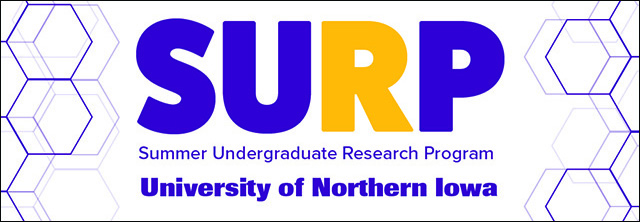
2022 Summer Undergraduate Research Program (SURP) Symposium
Location
ScholarSpace, Rod Library, University of Northern Iowa
Presentation Type
Open Access Poster Presentation
Document Type
poster
Keywords
Grapsidae--Collection and preservation--Iowa--Cedar Falls; Natural history museums--Collection management--New York (State)--New York;
Abstract
Curation is a powerful tool when accessing information about specialized collections. Many researchers that use specimens borrowed from other institutions often find the supporting information insufficient. Over the last two years, a large collection of preserved grapsoid crabs was received from Frank H. Barnwell, Ecology, Evolution, and Behavior, University of Minnesota-Twin Cities.The collection of land crabs has undergone an extensive curation process done by University of Northern Iowa undergraduates. The curation process included identifying species, locating pin points, counting of sexes, rehousing and producing new labels. The specimens were sorted by their species, counted by gender, and their collection locations determined. An Excel® spreadsheet was used to record the data as well as Google Earth® to pinpoint the recovery site of each specimen. From this information, new labels were written and printed on archival paper in indelible ink for each jar. In this collection, there are 84 fiddler crab species in 1,274 lots with 13,707 individuals. An auxiliary collection of 254 jars contained other kinds of grapsoid crabs. In addition to the fiddler crabs, there were 16 non-fiddler genera and 38 species found in this second collection. After more than 50 years of collection, Barnwell’s specimens became a part of one of the world’s largest invertebrate zoological collections in the American Natural History Museum in New York City. This material will provide a meaningful historical and geographical context for future research accessing global biogeography and diversity of brachyuran crabs.
Start Date
29-7-2022 11:00 AM
End Date
29-7-2022 1:30 PM
Event Host
Summer Undergraduate Research Program, University of Northern Iowa
Faculty Advisor
Carl Thurman
Department
Department of Biology
Copyright
©2022 Taylor Pruisman, Amber Finke, Frank Barnwell, and Carl Thurman
File Format
application/pdf
Recommended Citation
Pruisman, Taylor; Finke, Amber; and Thurman, Carl Ph.D., "Curating a Global Collection of Grapsoid Crabs for the American Natural History Museum, NYC" (2022). Summer Undergraduate Research Program (SURP) Symposium. 7.
https://scholarworks.uni.edu/surp/2022/all/7
Curating a Global Collection of Grapsoid Crabs for the American Natural History Museum, NYC
ScholarSpace, Rod Library, University of Northern Iowa
Curation is a powerful tool when accessing information about specialized collections. Many researchers that use specimens borrowed from other institutions often find the supporting information insufficient. Over the last two years, a large collection of preserved grapsoid crabs was received from Frank H. Barnwell, Ecology, Evolution, and Behavior, University of Minnesota-Twin Cities.The collection of land crabs has undergone an extensive curation process done by University of Northern Iowa undergraduates. The curation process included identifying species, locating pin points, counting of sexes, rehousing and producing new labels. The specimens were sorted by their species, counted by gender, and their collection locations determined. An Excel® spreadsheet was used to record the data as well as Google Earth® to pinpoint the recovery site of each specimen. From this information, new labels were written and printed on archival paper in indelible ink for each jar. In this collection, there are 84 fiddler crab species in 1,274 lots with 13,707 individuals. An auxiliary collection of 254 jars contained other kinds of grapsoid crabs. In addition to the fiddler crabs, there were 16 non-fiddler genera and 38 species found in this second collection. After more than 50 years of collection, Barnwell’s specimens became a part of one of the world’s largest invertebrate zoological collections in the American Natural History Museum in New York City. This material will provide a meaningful historical and geographical context for future research accessing global biogeography and diversity of brachyuran crabs.



Comments
Benefactor - Frank Barnwell, Dept. Ecology, Evolution and Behavior, University of Minnesota - Twin Cities. A large collection of land crabs were received from him.